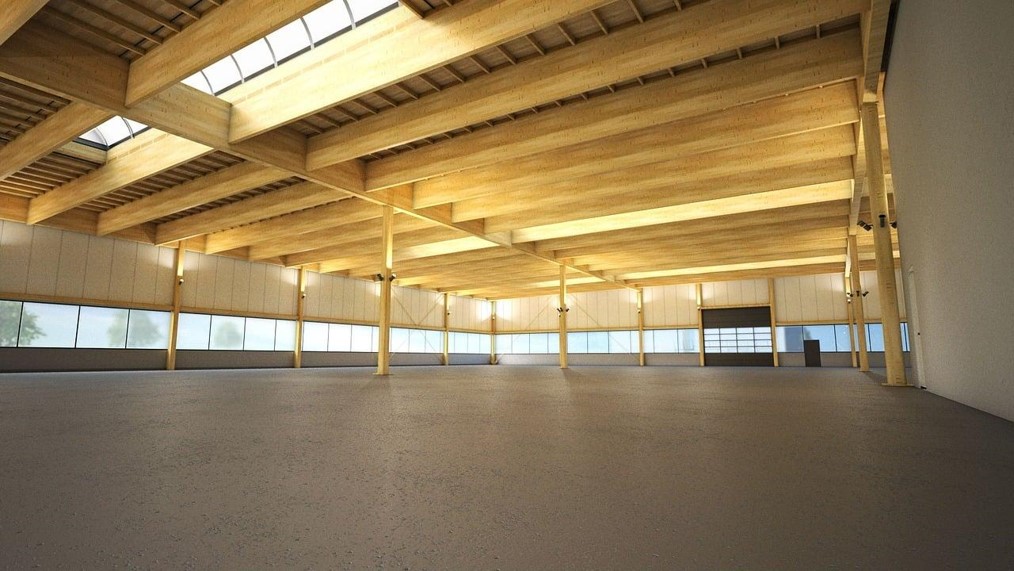

MakMax Plus
What is a Hazardous Materials Warehouse? Introduction to building code standards and inexpensive ways to build one.
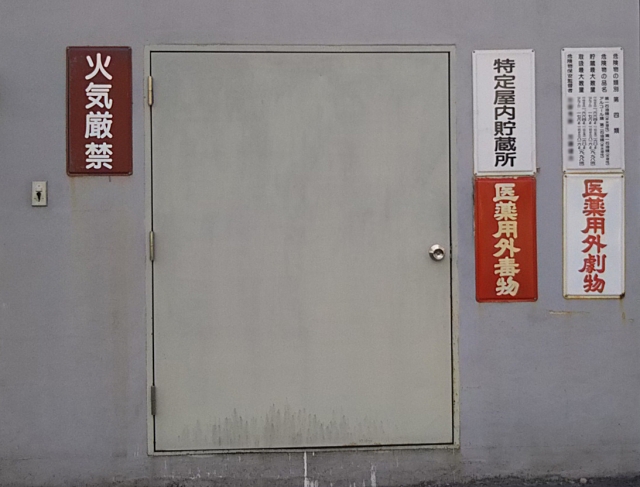
A facility that stores substances designated as “hazardous materials” by law is called a “hazardous materials warehouse. Hazardous material warehouses are strictly regulated by laws such as the Fire Defense Law and the Building Standards Law in terms of their facilities and personnel structure, and detailed consultation with the fire department is necessary to construct them.
In addition, there are complicated procedures to apply for and obtain various permits. Construction of hazardous materials warehouses is expensive, complicated, and requires a long construction period.
The “Tent Warehouse” is introduced in this article as a solution to this problem.
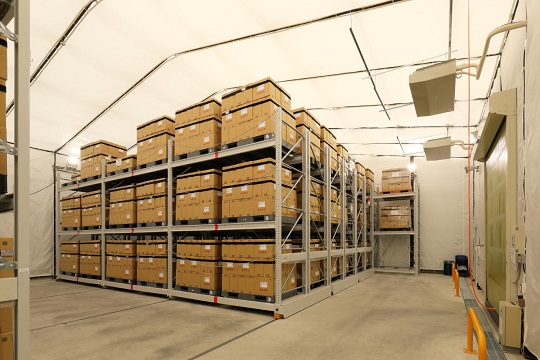
Tent warehouses can be constructed in a shorter period of time and at a lower cost than conventional construction, and the troublesome tasks of consulting with the fire department and applying for construction can be handled by a one-stop service provider.
If you need to store hazardous materials, such as chemical manufacturing businesses, please take a look at the following information.
Table of Contents
- Definition of “Dangerous Goods Warehouse
- 1-1. Hazardous Materials
- 2. standards for hazardous materials warehouses as stipulated by law
- 2-1. Criteria for location, etc.
- 2-2. Criteria for size, etc.
- 2-3. Standards for structure, etc.
- 3. hazardous materials can be stored in tented warehouses
- 4. what is a tented warehouse? Its Definition and Numerous Benefits
- 4-1. Extensive lineup of tent warehouses to choose from according to your needs and applications
- 5. summary: tent warehouse, foundation, exterior, fire prevention consultation, and confirmation application can all be requested at a one-stop shop
Definition of "Dangerous Goods Warehouse
The Fire Service Law stipulates the following methods for storing hazardous materials.
Hazardous materials in excess of the designated quantity must be stored at a storage facility (including storage facilities where hazardous materials are stored or handled in tanks fixed to vehicles (hereinafter referred to as “mobile tank storage facilities”)). The same shall apply hereinafter. The same shall apply hereinafter). Hazardous materials in excess of the specified quantity shall not be stored in any place other than storage facilities (including storage facilities where hazardous materials are stored or handled in tanks fixed to vehicles (hereinafter referred to as “mobile tank storage facilities”).
(From Article 10 of the Fire Defense Law)
When a warehouse is used as a storage facility, it is generally called a “hazardous materials warehouse.

There are detailed hardware standards for hazardous materials warehouses, and they must meet these standards in terms of location, equipment, and structure. In addition, the same applies to the handling and security systems for hazardous materials. After satisfying the standards and consulting with the fire department to obtain permission, construction can finally begin. When attempting to build a hazardous materials warehouse, you will face the following challenges
- take time
- cost much
- take time and effort
Hazardous materials” here refers to the following substances, which are also defined by the Fire Service Law.
Hazardous Materials
The Fire Service Act defines hazardous materials as follows
Hazardous material means any of the articles listed in the “Name” column of appended table 1 which has the properties listed in the “Properties” column of the same table in accordance with the classification specified in the same table.”
(From Fire Defense Law, Article 2, Section 7)
And the following table is a summary of “Appendix 1”. Businesses that handle applicable products are encouraged to also review the following contents of this report.
| classification | nature | Example of product name |
|---|---|---|
| first class | Oxidizing solids | (1) Chlorates (2) Perchlorates (3) Inorganic peroxides (4) Chlorites (5) Bromates, etc. |
| second class | Combustible solids | (1) Phosphorus sulfide (2) Red phosphorus (3) Sulfur (4) Iron powder (5) Metal powder, etc. |
| class III | Spontaneously combustible and water-prohibited substances | (1) Potassium (2) Sodium (3) Alkylaluminum (4) Alkyl lithium (5) Yellow phosphorus, etc. |
| Class 4 | inflammable liquid | (1) Special flammables (2) Petroleum No. 1 (3) Alcohols (4) Petroleum No. 2 (5) Petroleum No. 3, etc. |
| the fifth category | self-reactive substance | (1) Organic peroxides (2) Nitrates (3) Nitro compounds (4) Nitroso compounds (5) Azo compounds, etc. |
| category VI | Oxidizing Liquids | (1) Perchloric acid (2) Hydrogen peroxide (3) Nitric acid (4) Other items specified by a Cabinet Order (5) Containing any of the items listed in the preceding items |
Reference: ” Excerpts from Fire Service Laws and Regulations,” Fire and Disaster Management Agency, Ministry of Internal Affairs and Communications
Standards for hazardous materials warehouses as defined by law
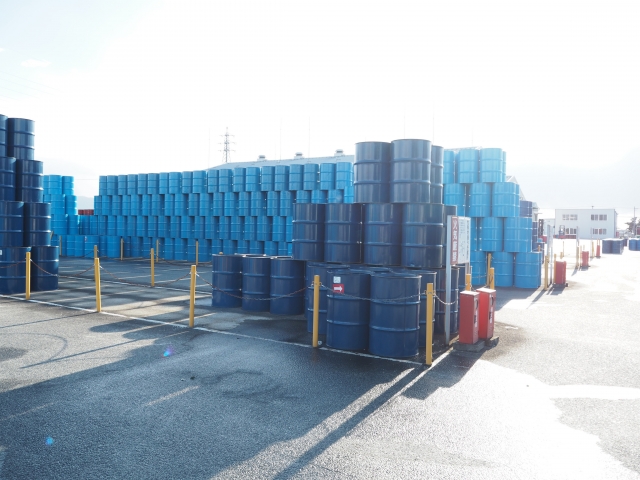
Some of the standards required for hazardous materials warehouses are listed below. In addition to the law, standards may also be specified in detail by local ordinances, so be sure to check with your local government.
Construction can only be done if all of these criteria are met in consultation with the fire department and local government and an application is submitted in advance.
When construction is completed, the building must also apply for and receive a completion inspection, which must be cleared before it can be used as a hazardous materials warehouse.
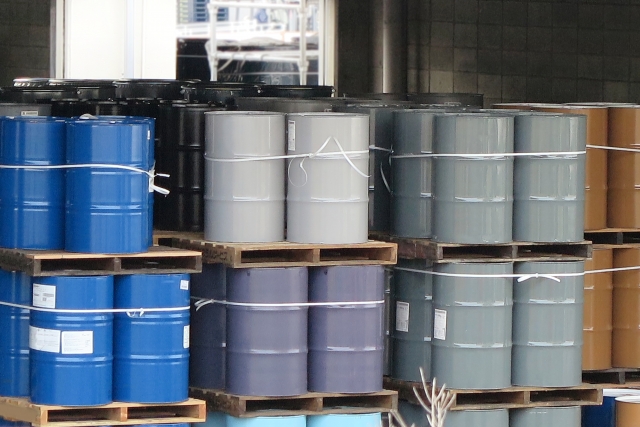
Criteria for location, etc.
- Ensure “security distance” according to each nearby security object (e.g., schools, hospitals, etc.)
- Secure “vacant holding space” according to the amount of hazardous materials stored and the structure of the warehouse.
Criteria for size, etc.
- Eaves height must be less than 6m and the building must be a flat roof.
- The floor area must be 1,000 m2 or less.
Standards for structure, etc.
- Use lightweight metal sheets or other noncombustible materials for roofs and beams
- No ceiling
- Pillars, floors, and walls must be of fire-resistant construction
- Window glass should be screened glass.
- Ensure brightness and lighting necessary for handling hazardous materials
Hazardous materials can be stored in tent warehouses.
The above criteria may give the impression that a hazardous materials warehouse must be built in a general facility with conventional construction, but a “tent warehouse” can also meet the criteria. And there are many advantages to tent warehouses.
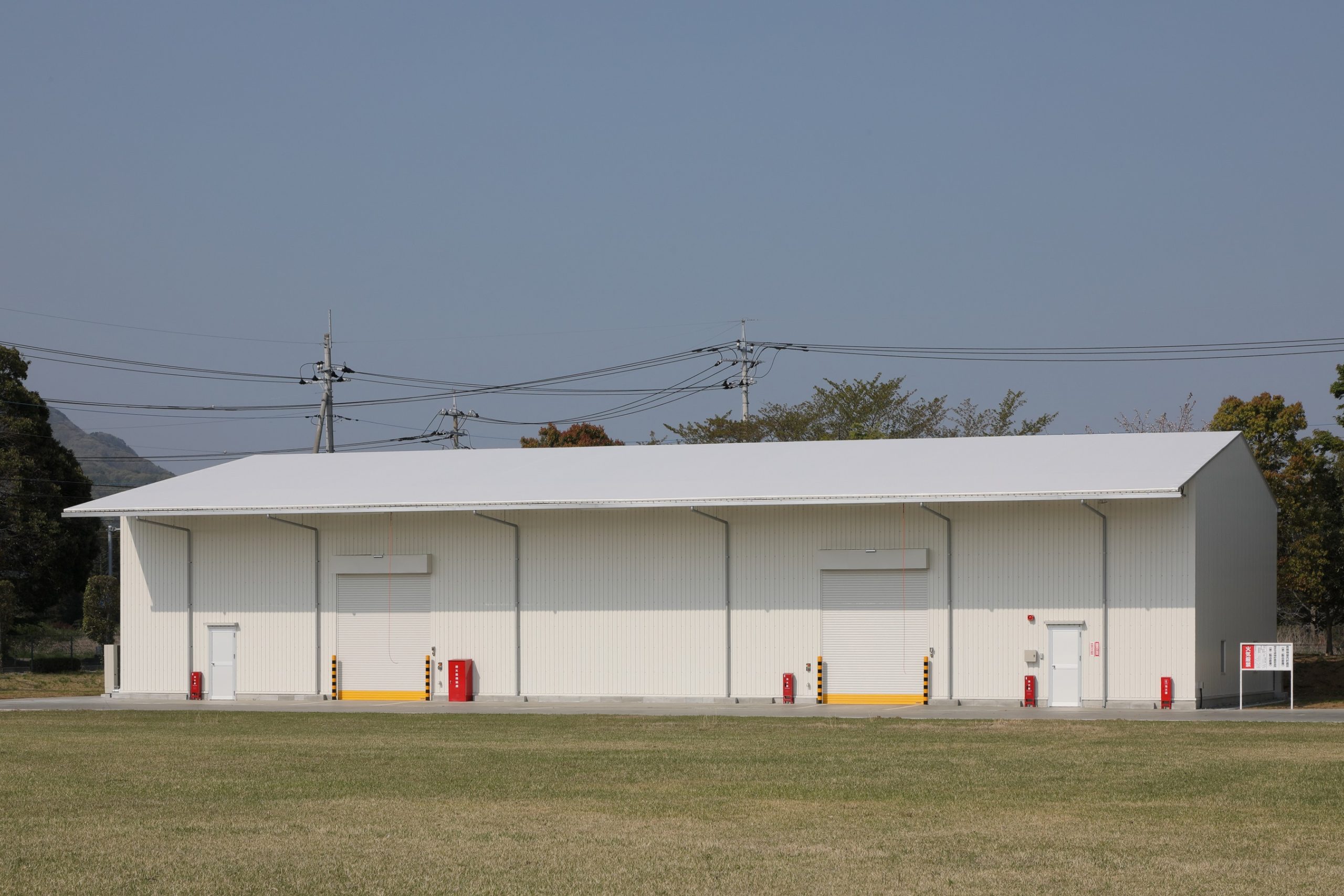
What is a Tent Warehouse? Its Definition and Numerous Benefits
Tent warehouses are tent-like warehouse structures with a “membrane structure” in which a metal framework is covered with a membrane material (fabric).
With a tent, aren’t you worried about durability?”
I thought you said it was a temporary structure and couldn’t be used for a hazardous materials warehouse.”
Tent warehouses are durable and can be used without problems as hazardous materials warehouses, as they are legally defined as buildings.
- Construction costs can be reduced by using lightweight steel frames, etc.
- By systematizing parts, the construction period is overwhelmingly short, at 1/3 of that for conventional construction.
- High security and peace of mind through the use of galvalume steel plates for exterior walls, etc.
- Easy maintenance with a service life of 10 to 20 years
- Pillarless structure allows for efficient large space
- Highly lighted, achieving over 3000 LX without light fixtures on sunny days
- The “Specification for Heavy Snowfall Areas” can meet the strict standards of heavy snowfall areas.
- Flexible, earthquake resistant, no risk of roof falling
- Membrane material prevents rust from forming on roofs, etc.
Extensive lineup of tent warehouses to choose from according to your needs and applications
A representative product of Tent Warehouse is the “FLEX HOUSE” series. Flex House offers a wide range of products, including the following, so that you can choose the one that best meets your needs for each application and region.
Fixed Tent Warehouse "FLEX HOUSE-FIX
The most basic tent warehouse for frontage from 8m to 30m. There is also a large “FLEX HOUSE-MEGA” that creates a large column-free space.
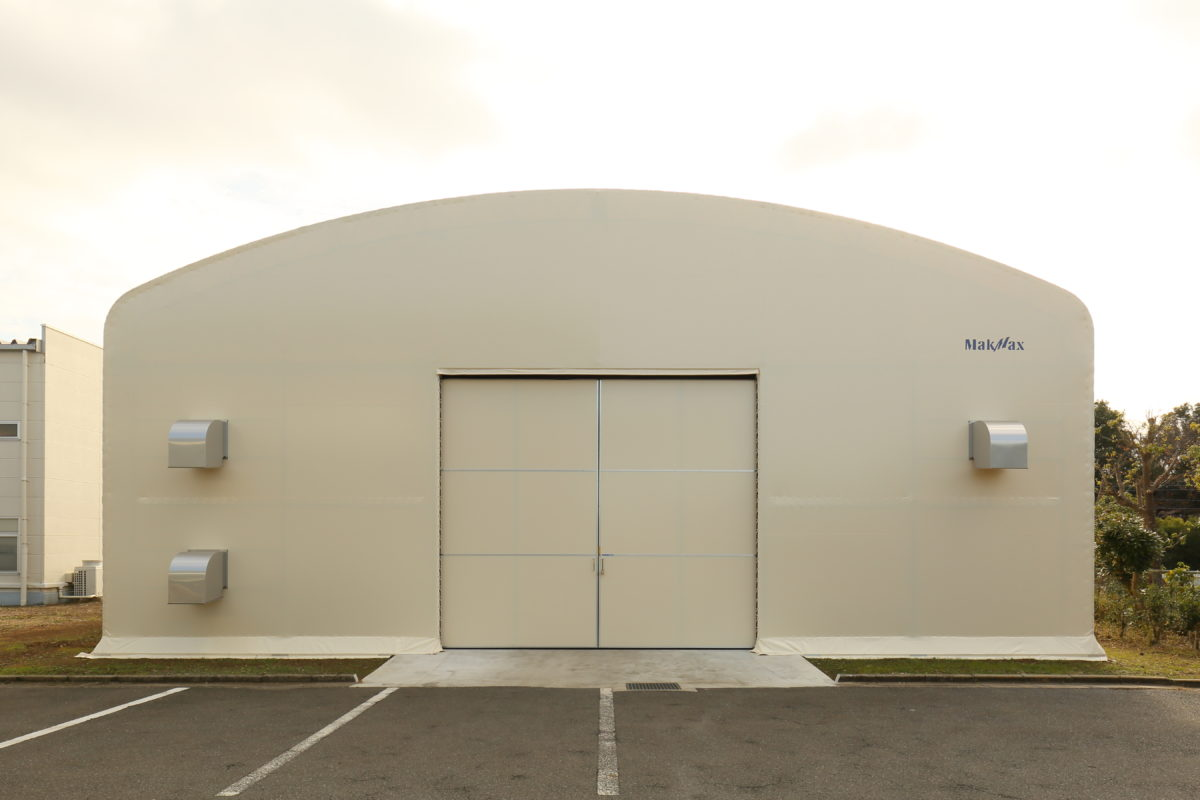
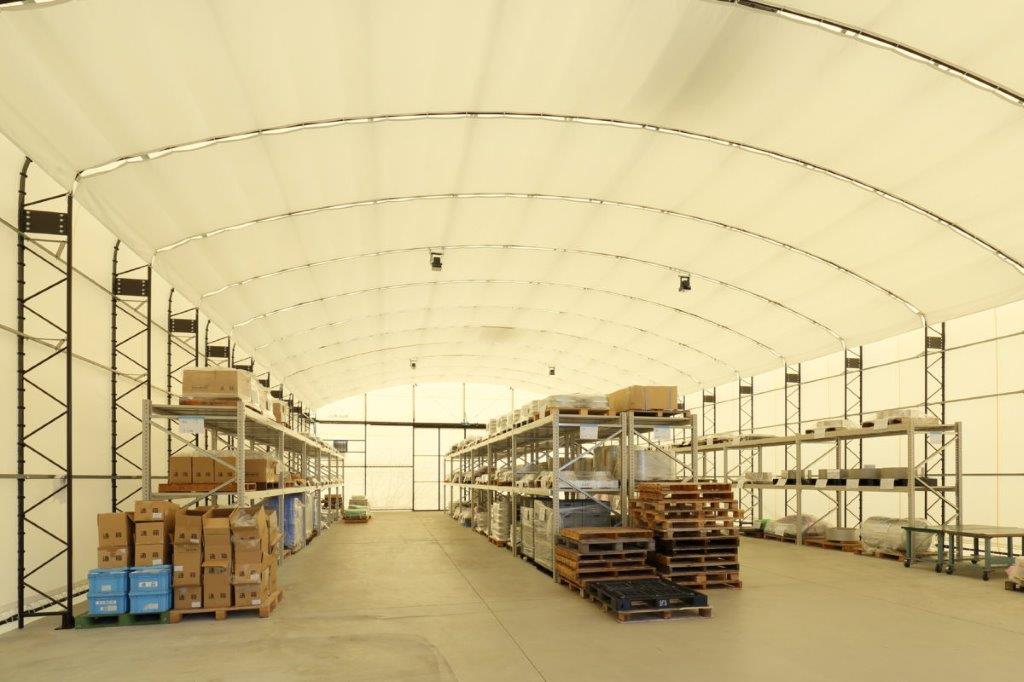
FLEX HOUSE-JH (bellows house), a telescopic tent warehouse
This tent warehouse dramatically improves the time and effort required to load and unload stored items by allowing the main body to expand and contract in a bellows-like shape.
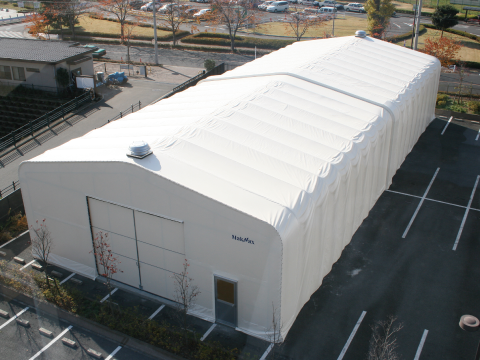
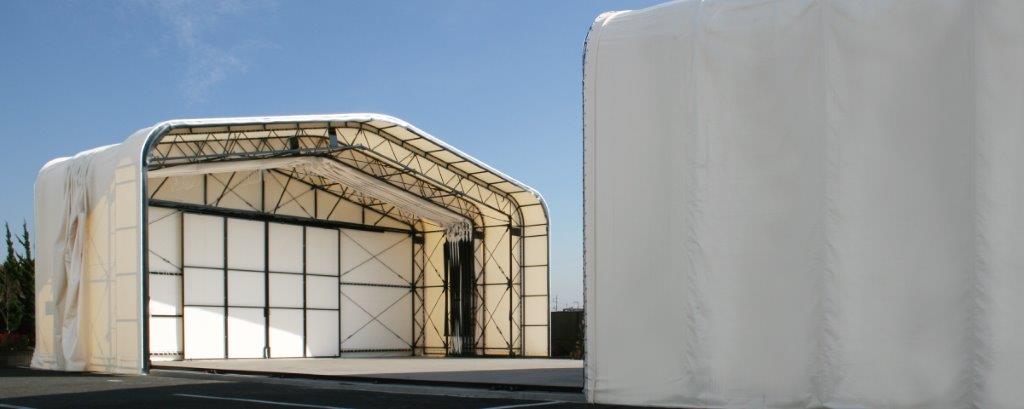
Versatile Tent Warehouse "FLEX HOUSE-MIGHTY
An all-purpose tent warehouse that can be used not only as a warehouse but also as a factory or workshop use.
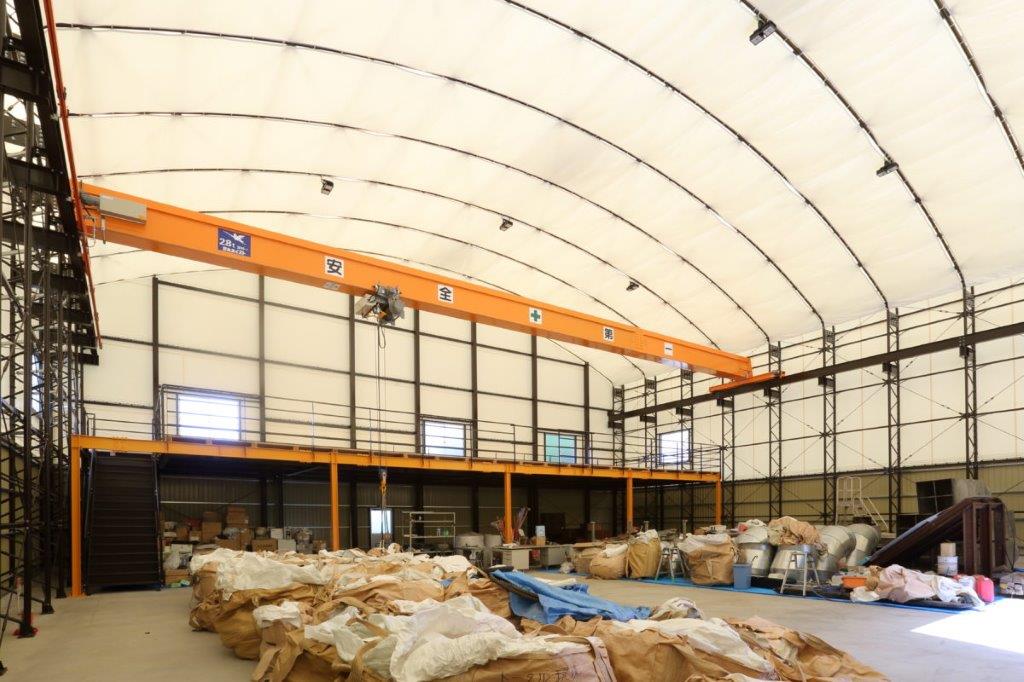
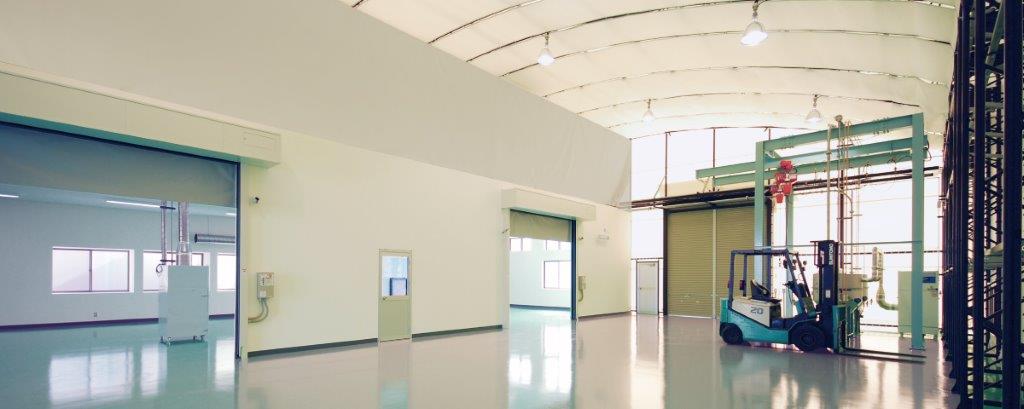
Hybrid type tent warehouse "FLEX HOUSE-HYBRID
Tent warehouse that combines the lighting performance of a membrane roof with the durability and security of steel sheet wall material.
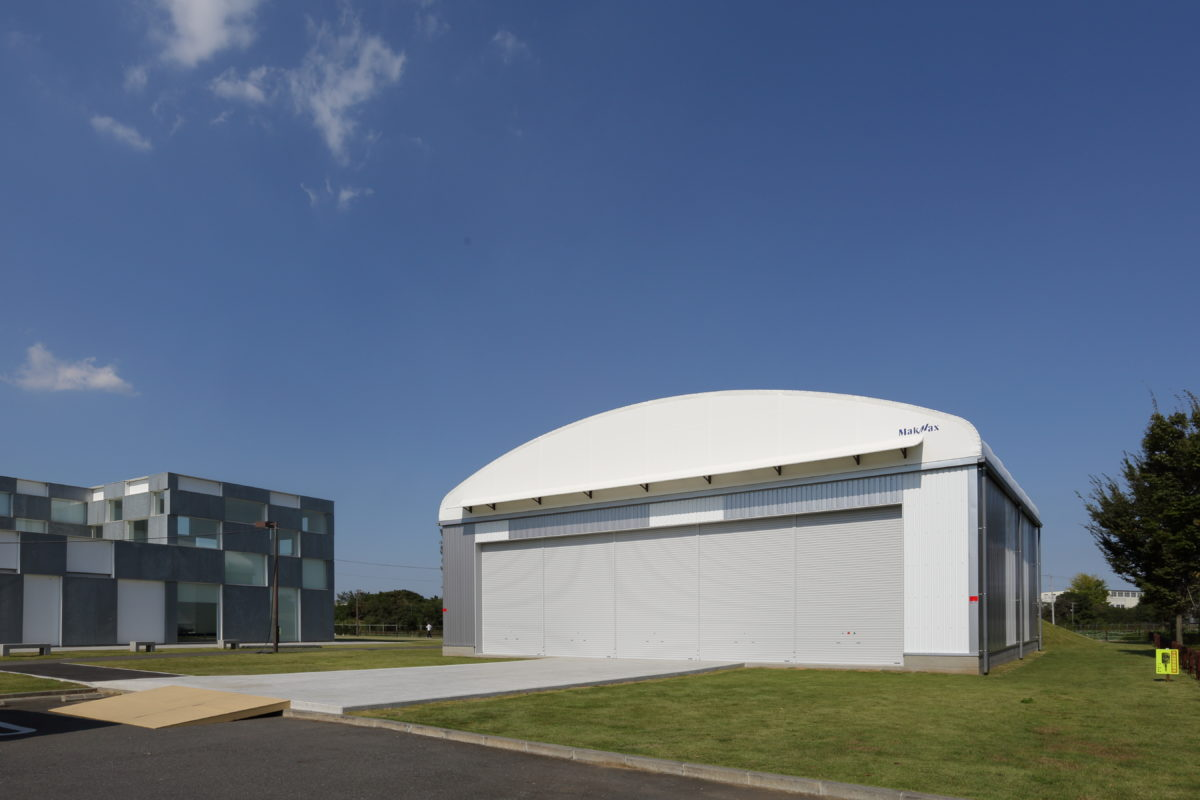
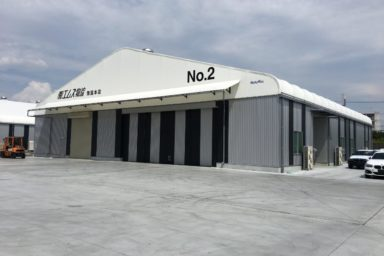
FLEX HOUSE-C&W," a cold/heat-insulated tent warehouse
Tent warehouse with two faces of cold storage and warm storage by double membrane system.
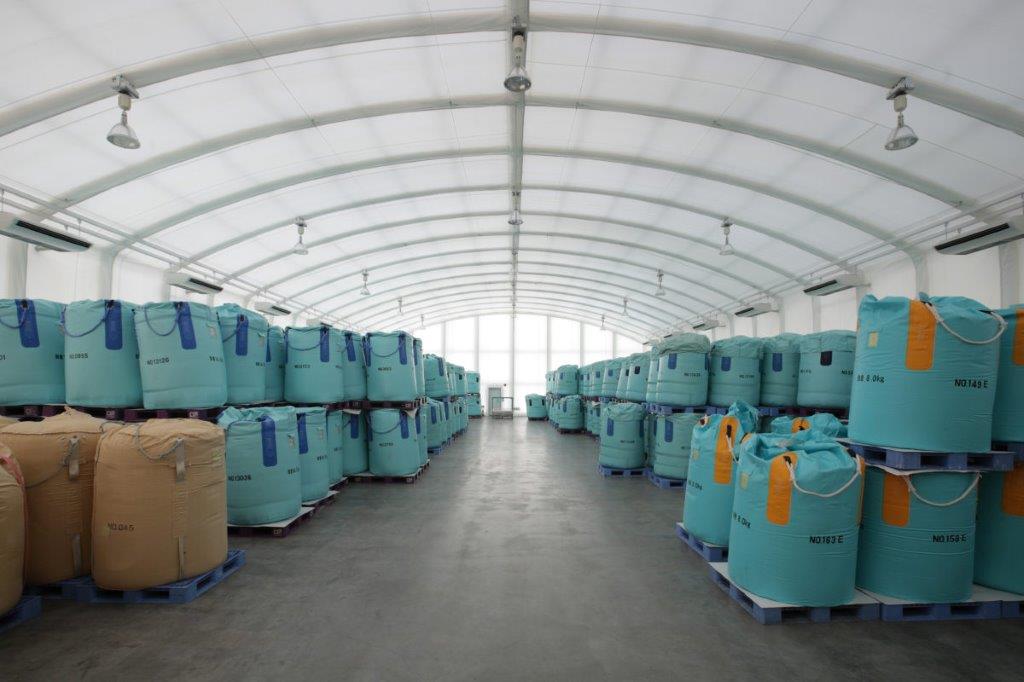
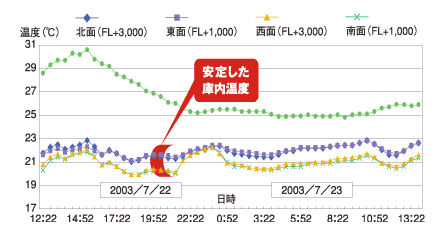
Click here for a list of Tent Warehouse products
Summary: Tent warehouse, foundation, exterior, fire prevention consultation, and confirmation application can all be requested as a one-stop service.
Taiyo Kogyo Corporation not only has a proven track record in the sale of tent warehouses throughout Japan, but also handles foundation and exterior construction work, as well as consultation with the fire department and various applications on behalf of the client, all in a one-stop service.
This is an advantage that conventional construction and other companies do not have. The construction of a hazardous materials warehouse can be accomplished in a short time, at low cost, and without hassle, which were three major challenges: time-consuming, expensive, and labor-intensive.
More information about storing hazardous materials in tent warehouses is available.
Click here to see our track record of installing hazardous materials warehouses.
> Hazardous Materials Warehouse
Tent Warehouseへの
Any Inquries

What you need to know when building a warehouse
We packed it all in.
Clues to solving the 2024 problem
Recommended for
I don't know where to start in building a warehouse.
I want to build a warehouse in an economical way.
Which type of warehouse should we build?
I want to learn the basics of warehouse construction anyway.
I'm concerned about the 2024 problem, but I don't know what to do about it.
Related Articles
- TOP>
- MakMax Plus>
- What is a Hazardous Materials Warehouse? Introduction to building code standards and inexpensive ways to build one.







